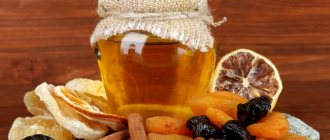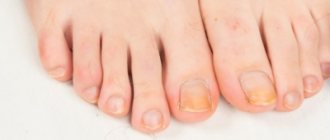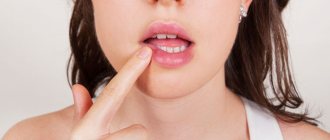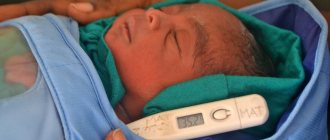Main causes of high temperature
The cause of an increase in body temperature above 36.9ºC is infection or inflammation. Viral or bacterial infection causes an immune response. In response, the defense system produces antibodies and raises the temperature. This helps to neutralize most foreign microbes. Therefore, fever is a normal reaction that a person needs to survive.
The magnitude of the temperature jump (up to 37, 39 or 41º) depends on several factors (the human immunity, the rate of virus reproduction and the number of foreign bacteria). If the immune system managed to take control of the infection and limit the growth of its carriers, then the temperature may not rise.
If, at the beginning of infection, the immune system fails to cope, the number of foreign microorganisms reaches a critical value, then the body raises the temperature. This destroys the infection and stimulates the production of its own interferon.
Nutrition
A balanced diet will also help maintain the body's resources during illness. If there is loss of appetite, there is no need to force feed the patient. Eating fruits and vegetables and staying hydrated should be emphasized. You can supplement your diet with foods containing vitamin C. It is undesirable to eat spicy and fatty foods, since the body spends a large amount of energy needed to restore strength to digest such dishes. It is best to eat cereals, light soups, lean meat and fish, and dairy products.
We looked at how to quickly reduce the temperature at home. There are a great many reasons for its increase, so if you are not a doctor, do not try to diagnose yourself; a specialist can handle this better.
How does the body raise its temperature?
The stimulus for an increase in temperature in the body is the death of immune cells. As soon as the brain receives a signal about a malfunction of the immune system, it turns on the thermoregulation center. At the same time, the body’s metabolism changes (decomposition reactions and energy formation are enhanced and synthesis reactions with the absorption of energy reserves are weakened), muscle contractions occur (the so-called chills).
Aches, eye pain, headaches are symptoms of intoxication that accompany the activity of a viral infection or foreign bacteria. These symptoms are not a consequence of fever, but often appear along with it.
Paracetamol
The most common paracetamol-based drugs are Coldakt, Ibuklin, Teraflu, Coldrex, Panadol, Efferalgan, Rinza and others. They should not be taken more than four times a day, and dosages should be maintained according to the patient's age. These drugs help relieve pain and fever. It should be taken into account that paracetamol has a negative effect on liver function. If the dosage is exceeded, intense allergic reactions may occur.
Changes in the body with rising temperature
Thermometer readings above 36.9º are considered elevated. At the same time, the figure 36.9 is still the norm. But 37 is already a disease. In addition to the massive death of viruses and foreign bacteria, heat causes other side processes. It stimulates some vital functions (blood flow increases, breathing quickens, evaporation increases) and slows down others (digestion and enzyme production).
What processes in the body are stimulated:
- The production of interferon, a protein substance that the immune system produces to fight the infectious agent, accelerates. The production of interferon directly depends on body temperature - the higher it is, the more protective protein is produced.
- When the temperature increases by 1º, metabolism accelerates by 10-12%. In this case, catabolic processes predominate (the breakdown of proteins, carbohydrates, fats with the release of energy). As a result, muscle mass is lost and weakness occurs.
- Accelerating metabolism requires an increase in the volume of incoming fluid and inhaled oxygen. These substances ensure the occurrence of metabolic reactions and are consumed first. Breathing accelerates (by 15%) and heart rate (by 27%). Thirst forms, lips become dry, and you want to drink.
- With increased breathing, the amount of carbon dioxide released increases. Cells are oversaturated with carbon dioxide (the gas does not have time to be completely eliminated), which impairs cerebral blood flow and oxygen supply to the brain. There are: headache, slow reflexes, inability to concentrate.
- Carbon dioxide intoxication (poisoning) disrupts the functioning of the nervous system. This manifests itself in confusion, delusions and hallucinations, seizures (more common in children than adults).
What processes in the body are inhibited:
- The secretion of saliva and digestive juices is reduced (which explains the loss of appetite), intestinal peristalsis is weakened, and the movement of masses through the intestines is disrupted. As a result, undigested food remains are a source of toxins, gas formation occurs, nausea and constipation form, and vomiting is possible (the body needs to get rid of food that it cannot currently digest).
- The secretion (formation) of enzymes and hormones in the pancreas decreases (less insulin is produced, there is nothing to absorb sugar, so often sweet foods and cakes cause vomiting - the body does not have the means to absorb them).
The ongoing processes may have unpleasant consequences or pass without a trace. Let's look at the dangers fraught with high fever in children and adults. And when is it necessary to shoot it down?
Why is high temperature dangerous?
The main danger of fever is the possibility of protein denaturation. The process begins after 42º (with slight deviations of 0.1 or 0.2º).
In this case, protein molecules change their structure and become denatured. They cease to perform their functions and die.
In addition, with any fever, fluid is intensively consumed. Dehydration develops, blood and lymph thicken.
Other dangers concern those children (or adults) who have serious diseases of the nervous system (epilepsy, cerebral palsy, meningitis). In them, even a slight increase of 1º can provoke febrile convulsions and require urgent medical attention. In children without neurological diagnoses, seizures can be a consequence of a sharp jump in temperature (increase or decrease by 3º within 15-30 minutes)
High temperature in an adult is dangerous for heart disease. Increased heart rate and shortness of breath often follow its increase and are dangerous for people with defects, rhythm disturbances, and tachycardia.
What accompanying symptoms are observed?
In a state of feverish heat, the body works in a special mode. It accelerates blood flow and catabolism, slows down digestion. Therefore, in addition to a hot forehead and body, other associated symptoms are observed:
- Lips take on an unusual red tint and become dry. I'm thirsty.
- Cheeks turn red.
- A child’s high temperature and cold extremities indicate that the internal “fire” has moved from the arms and legs to the area of inflammation. Cold feet and ankles are a common symptom of fever.
High temperature without symptoms of illness
A high temperature in a child without symptoms of any illness often indicates a viral infection (as does a high temperature without symptoms in an adult). Fever is the first manifestation of the virus and signals infection before the appearance of cough, runny nose, or headache.
A low, constant temperature (37º) indicates a sluggish inflammatory process (chronic inflammation, bacterial infections, oncology). This temperature is often not accompanied by other symptoms. Therefore, it can be difficult to find out the source of the disease and prescribe treatment. A comprehensive examination and complete diagnosis are necessary.
Fever and cough are common signs of bacterial infection. The causative agent of infection (coccus) enters the mucous membrane and forms purulent discharge. A cough occurs to expel pus from the bronchi.
A high temperature and cough in a child indicate inflammation of the respiratory tract (lungs, bronchi).
Medication methods
A temperature above 38 degrees indicates that the body is actively fighting various infectious pathogens, which die at such levels. For this reason, experts do not recommend reducing the fever if it does not exceed 39 degrees. But what temperature should you lower in a child?
For infants (up to one year old) the critical point is 38 degrees. With heat above this level, complications on the heart, nervous system, brain, kidneys, and dehydration are possible. All these unpleasant consequences are possible only with prolonged heat, but it must be brought down immediately.
For babies older than one year, the critical mark is 39 degrees. The same complications are likely, but if the fever lasts for a long time. Once critical values are reached, it is necessary to quickly and effectively reduce the temperature. In this case, you should use any available methods. The main thing in this case is to achieve results.
High temperature during pregnancy
A short-term increase in temperature to 38-38.5º is not dangerous to the life and development of the fetus. A more dangerous reason for its increase is the causative agent of infection (virus or bacteria).
Prolonged fever (more than 5 days) can cause pathology, premature aging of the placenta and miscarriage. Prolonged fever can disrupt a child's development. Depending on the stage of pregnancy, the baby may have impaired brain development, deformity, or other developmental defects.
Interesting to know: the result of the action of the hormone progesterone is a frequent, causeless increase in temperature during pregnancy. This rise is insignificant (up to 37º), and therefore is not a pathology and does not require artificial reduction or treatment.
Folk remedies
Very often, at home, they try to reduce the patient’s temperature using folk remedies. And in most cases this is successful; it is very important to choose the right method from the many offered.
Non-traditional remedies provide a gentler effect on the body without affecting the intestines. Therapy necessarily includes drinking plenty of fluids and bed rest. There are also several useful recipes.
Medicinal plants
Many plants are used to treat inflammation and colds. The following can be used as antipyretics:
- coltsfoot;
- chamomile;
- Linden;
- raspberry (leaves);
- viburnum.
They are used in various ways: you can make ground jam from the berries, or make tea from the leaves. It is also useful to add a few drops of honey. Such methods can be used independently or in combination with medications.
Apple vinegar
Vinegar is used to combat hyperthermia quite often. Its scope of application is wiping; it acts locally. Many people talk about possible side effects due to the use of vinegar, namely allergic rashes, burns, redness, itching. In fact, to reduce the reaction, you need to use apple cider vinegar 9%. This product has a milder effect, is actively used by chefs, and has beneficial properties.
To prepare the solution, you need to mix 500 ml of water at room temperature and 20 grams of vinegar. Moisten a towel or napkin and wipe the patient’s chest, arms, legs, forehead. You need to be careful to ensure that the solution does not get into your eyes or onto an open mucous wound, as this will cause a burning sensation.
Rubbing with vinegar gives a significant effect; the readings will decrease by 2-3 degrees after 20-30 minutes. This procedure can be repeated no more than 2 times during the day. Use for pregnant women is prohibited.
Citrus fruit
Products with a high content of vitamin C have an antipyretic effect. These include citrus fruits, namely lemons and oranges. They should be eaten pure or brewed into tea. The only contraindications are the presence of allergies. Therefore, if there is a possibility of a reaction, you can use vitamin C tablets. It can be found in any pharmacy at an affordable price.
There are many antipyretic drugs, it is very important to choose wisely and use only proven methods. If there is no guarantee, it is better to seek help and call an ambulance.
A child has a high temperature: what to do and whether to bring it down
What to do if your child has a high temperature? Should it be knocked down or should the child’s body be given freedom to decide? To answer this question, let's remember why febrile conditions arise.
Any fever is a manifestation of the fight and a stimulus for the growth of immunity. The body needs it to survive. Therefore, what to do at a high temperature - wait or give an antipyretic drug - depends on the child’s body and condition.
If the child does not have neurological pathologies or heart disease, artificially lowering the temperature will complicate the course of the disease. At best, it will push back its completion date. At worst, it will cause widespread infection.
In addition, artificially reducing the fever prevents the immune forces from developing antibodies against the microbe. This means that it does not allow the formation of immunity against this disease, making possible rapid re-infection.
It is especially important not to counteract fever during a viral infection.
Modern medicine does not have effective remedies against cell infection. Reducing the temperature limits the powers of the immune system, does not allow it to overcome the virus, and provides additional bonuses for infection.
What to do if your child’s fever persists
Preparations with interferon (viferon, genferon) can be used as an antipyretic agent. This protein substance is produced in the body to fight infection. Preparations with interferon represent “foreign immunity”, which, when ingested, begins to fight the virus. As a result of the additional immune forces, the fever quickly decreases to tolerable or normal levels.
This remedy has a complex effect on infection (effective against viruses and some bacterial infections). It not only removes the symptoms of the disease, but also limits the spread of infection and counteracts those viruses that have managed to multiply inside.
In any case, we recommend not to self-medicate, but to immediately seek medical help from a specialist.
Antipyretics for high fever in children
Let us list those drugs that are relatively safe to reduce fever. They are sold in pharmacies without a prescription:
- Paracetamol (and drugs containing it - panadol, efferalgan, phenacetin) in suppositories, drops, tablets, powders (in any convenient form). It is most effective against viruses, less effective when infected by bacteria. Has an additional analgesic effect. Allowed for children after 3 months. Paracetamol medications should not be taken for longer than 5 days. Also, you should not give them to your child more than 4 times a day. Possible side effects: allergies, abdominal pain, childhood asthma.
- Ibuprofen (Nurofen) - unlike paracetamol, reduces not only fever, but also inflammation. Side effects: may cause too strong a decrease in temperature, shortness of breath and bronchospasm, indigestion.
To increase the effectiveness of these drugs, it is necessary to ensure a drinking regime and cool air in the room. Water is necessary for the body to function (it is greatly consumed during fever and sweating). And cool air helps to spend internal heat on heating the air in the lungs and thereby reduces the temperature.
Important: when giving a child antipyretic drugs, you need to understand that they do not cure, but only temporarily remove the visible manifestations of the disease (its symptoms).
Fruit drinks and vitamin teas
Ascorbic acid has antipyretic properties. The body gets vitamin C from citrus fruits:
- grapefruits;
- oranges;
- lemons;
- tangerines.
The patient eats half or a whole exotic fruit, washes it down with warm tea and lies down under a blanket. Vitamin C invigorates, reduces inflammation and strengthens the immune system, helping the body fight a cold or viral infection. With regular consumption of citrus fruits, the temperature returns to normal in just 1–2 days.
Freshly squeezed lemon juice helps reduce fever. Pour 2-3 tablespoons of a citrus drink into a glass of warm water, add 30 g of honey and drink before bed. Lemon medicine has a double effect: the hot liquid stimulates sweating, and the vitamin C contained in the exotic fruit destroys inflammation. Sometimes a honey-citrus drink is supplemented with garlic. The spice is finely chopped, placed on a saucer and placed next to the bed. The preparation saturates the air with phytoncides. They destroy bacteria and viruses.
One of the best ways to bring down a fever without taking pills is to sweat a lot. The patient will need cotton pajamas, wool socks, a blanket and 300 ml of hot drink. Herbal decoctions with antipyretic properties are recommended:
- rowan or rose hip fruits;
- elderberry or linden flowers;
- blackberry leaves;
- sea buckthorn sprigs;
- dried pear slices.
Pour a cup of boiling water over a tablespoon of the selected plant. The drink is infused for 10 minutes in a water bath, then the container is wrapped in a towel and waited until the broth cools to 55–60 degrees. The liquid is filtered, separated from the cake, and mixed with a tablespoon of honey. Drink the natural medicine in small sips, put on pajamas and woolen socks, and crawl under the blanket. After 5–10 minutes, active sweating begins. The patient should not get out from under the blanket for at least half an hour.
A decoction of peppermint is useful. Regular soda can quickly reduce the temperature. Pour 2 tsp into a glass of warm liquid. powder, stir until the dry particles are completely dissolved. Adults drink 2 glasses of medicine in one gulp, and the child is given 150–200 ml of liquid. Soda solution can inhibit the production of hydrochloric acid; it is not recommended for low acidity. The medicine is supplemented with herbal compresses:
- yarrow;
- thyme;
- eucalyptus;
- birch buds.
Rags soaked in warm herbal medicines are applied to the armpits, forehead, back of the head and popliteal fossa.
Antipyretic drinks are prepared from berries, dried fruits and herbs:
- Pour a cup of boiling water over 30 g of raisins. Wait until the dried grapes swell. Drink the infusion without adding honey or sugar, wrap yourself in a warm blanket. You can eat raisins; dried fruits contain many microelements and vitamins that strengthen the immune system.
- Pour 30–50 g of raspberry jam or syrup into a cup. Dilute with hot water and drink in small sips.
- Prepare a decoction of thyme, birch buds, St. John's wort, oregano and mint. Crushed herbs are mixed in equal proportions. For 2 tsp. preparations take a glass of boiling water. In order for the plants to release their minerals and essential oils, the drink is infused in a water bath. Strain 250 ml of the product, you can add a little honey to improve the taste. When the broth becomes warm, you need to put on cotton pajamas with woolen socks and take 100 ml of cognac. Drink a glass of herbal tea and cover yourself with a blanket for half an hour. You can take alcohol and decoction before bed.
- Pour 30 g of dried raspberries and the same amount of linden flowers into a half-liter jar. Add 400 ml of boiling water. Seal the jar and cover with a towel. Strain after 40 minutes, divide into 2 servings. Take the herbal medicine in small sips, covered with a warm blanket.
- Mix crushed mint leaves with dried elderberry and linden flowers. For 30 g of plants take 60 ml of water. Cook for 20 minutes in a water bath. Drink the strained infusion three times a day, adding a little sugar or honey.
- Mash 100 g of fresh or frozen cranberries with a fork. Pour a glass of hot liquid and stir. Drink 500–600 ml of fruit drink per day. If you don’t like the sour taste, add honey to the berry medicine. The antipyretic drink is prepared from red currants, lingonberries and cranberries. The products are mixed in equal proportions and mashed with a fork with sugar or honey. Add hot water to make a thick drink. Consume before breakfast and lunch. Drink a glass of warm fruit drink before bed.
When you have a cold, it is not for nothing that they recommend drinking milk with honey, soda and butter. The drink strengthens the immune system, stimulates sweating and has antipyretic properties. Milk is consumed if the body temperature is not higher than 39.5 degrees, otherwise it will curdle in the stomach and cause indigestion.
How to reduce a high temperature at home
To bring down a child’s high fever without medication, the following methods are used.
Want something interesting?
Air baths and cool showers
If a child is allowed to lie naked, his temperature will drop by a few tenths of a degree. In addition, wiping the body with cool and damp compresses will also help.
Safe reduction with an enema
Stably and safely reduces the temperature by 0.5º. In addition, it prevents gas formation, flatulence, and constipation in the intestines, which often accompany feverish conditions.
Cold compresses and douches: Sebastian Kneipp’s technique
Sebastian Kneipp was a 19th century healer and priest who used water to treat various diseases. During the smallpox epidemic, this man saved the lives of many patients to whom he was invited to confess. To reduce internal heat, Kneipp carried out a number of measures that “pulled” the internal fire from its location to the periphery (extremities).
To do this, he recommended putting wet cold compresses on the arms and legs, and changing them as they warm up.
In addition, to treat fever, Kneipp recommended washing the body with cold water every 2 hours. In addition to washing away toxins from the skin, cold water stimulates the body's defense reserves and forces it to actively fight infection.
It is important to know: after the first two or three douches, the temperature may not decrease and may even increase by several tenths. But after this, a stable decrease in fever and a decrease in fever begins.
Diaphoretic tea and berry infusions
When treating smallpox, Kneipp often said: “if the patient sweats, he survives.” Sweating helped bring down a high temperature in an adult. As fluid evaporates from the surface of the skin, the body cools and the heat decreases. How to make your body sweat? Decoctions and berry infusions based on the following plants are used:
- Raspberries - berries (dried, frozen or boiled with sugar, honey), leaves.
- Linden blossom.
Important: Sweating consumes a lot of fluid. Be sure to replenish its losses by drinking plenty of water (tea, compote, mineral water, filtered water).
Non-drug methods
If it is not possible to reduce your temperature with medication, use the following methods.
- Fill the bathroom with water whose temperature does not exceed 40°C. Sit in it for no more than 10 minutes, periodically adding warm water.
- Wet the towel, wring it out and wipe your face, arms, neck and shoulders.
- Apply cold compresses to the elbows and under the knee.
- Brew tea from raspberry leaves with honey.
- Dilute table vinegar with water and wipe exposed areas of the body.
You should not resort to lowering the temperature immediately as soon as it exceeds the norm. By doing this, you will prevent the body from fighting the virus or infection, prolonging the course of the disease itself. If the fever causes significant discomfort, use popular antipyretics. In addition, reduce the temperature with wraps and rubdowns. If the fever does not subside by morning, you should definitely go to the doctor. Fever is often a symptom of a more serious illness.
how to get rid of flu with folk remedies
What not to do to reduce a high temperature
Everyone should know the list of these drugs. Of course, there are situations when a person needs to be rescued and use what is at hand. But if you have a choice, use only safe products.
- Aspirin - the mutual effect of certain types of viruses and aspirin can cause complications on the liver (depletion, destruction). The product is contraindicated for both adults and children. In addition, aspirin reduces blood clotting.
- Analgin also often causes complications and is therefore prohibited for use in treatment in a number of countries.
Antipyretics at high temperatures in adults and children should be used only for compelling indications (danger of convulsions, approaching 42º, shortness of breath). In many cases, it is better to wait 3 days, drink tea, water, compote, ventilate the premises, breathe cool air, and not bring down the fever with artificial means.
We recommend reading:
Aspirin
Acetylsalicylic acid is included in such tablets that bring down fever, such as Askofen, Aspirin, Citropak, Citramon, etc. These medications have a negative effect on the cardiovascular system, respiratory and digestive organs. Preparations based on acetylsalicylic acid are contraindicated in children under 12 years of age.
Medicines such as Baralgin, Analgin, Trialgin, Revalgin, etc. are produced on the basis of metamizole sodium. They effectively relieve pain, but have a reduced anti-inflammatory and antipyretic effect. The most commonly used injection is the drug. Medicines are not suitable for self-treatment without the supervision of a specialist, since significant allergic reactions may occur while taking them.
When choosing an antipyretic drug, it is recommended to give preference to single-component drugs. When combining several drugs, you must carefully read the instructions, as they may not be compatible. Simultaneous use of several drugs based on one active ingredient can lead to an overdose.
If vomiting begins against the background of elevated temperature, it is recommended to use suppositories. For children, medications are produced in the form of syrups. How to reduce a high fever using traditional methods?









